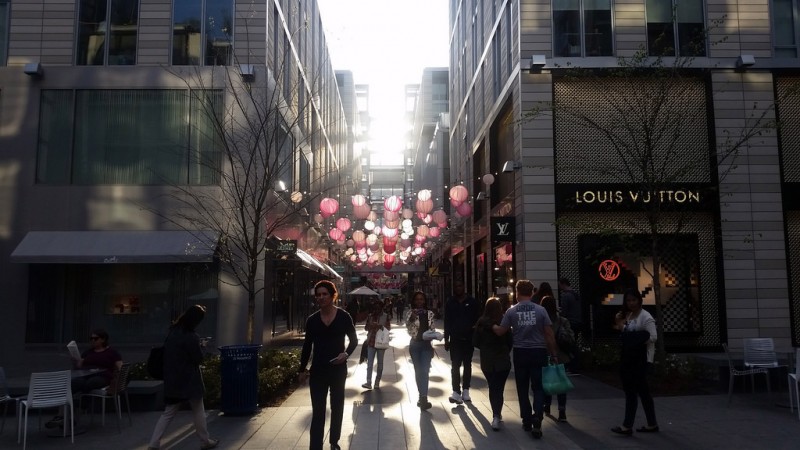Swing sets, fire pits, and jumbotrons: Creative space-activitating urban design is blossoming in DC

The Wharf's Recreation Pier swings. Image by the author.
Good urban public spaces feel alive with people and movement, and make visitors want to linger. But that liveliness is not always easy to nurture. Creative designers aiming to help spaces feel alive are turning to increasingly imaginative ideas, like grown-up swing sets and urban fire pits.
Although it's true that everyone enjoys a peaceful respite now and then, urban public spaces like plazas and downtown squares aim for liveliness. Humans enjoy being near other humans, and in the city empty spaces can feel unhappily dead, even dangerous.
Generating that liveliness takes the right recipe combining person density, diverse land uses, and interesting urban design. As new developments sprout around DC, urban designers are coming up with creative new ways to do their part to make interesting places.
For example at the District Wharf, some of the public spaces are set onto piers that jut out into the water. If there were nothing on the piers, visitors would have little reason to walk out onto them. To help activate their piers as lively public spaces, the Wharf's designers installed swings, oversized games, and moveable furniture.
The Wharf's oversized games. Image by the author.
Even if you don't personally use any of these urban design gadgets, and just want to pass through, other people using them make otherwise empty spaces feel more alive and enjoyable.
The Wharf also uses fire pits as gathering spaces. They're alluring places to sit and relax while the world passes by. And for passers by who aren't going to sit, they're an unusual thing to see while walking down the street.
The Wharf's fire pit. Image by the author.
Meanwhile, the space-activating benefits of moveable seating and spray parks may be well-documented, but the Wharf supplements those mainstays with rocking horses for children.
The Wharf's rocking horses. Image by the author.
These sorts of creative urban gadgets aren't unique to the Wharf. At CityCenterDC a jumbo three-sided video screen plays an endless loop of pleasant animations. Non-intrusive but hypnotic, the animations are a likable ambient background, and are surprisingly effective at making CityCenter's central plaza feel more alive.
CityCenter's jumbotron. Image by the author.
CityCenter also excels at colorful ornament, with its seasonal decorations floating above Palmer Alley.
CityCenter's Palmer Alley. Image by the author.
None of this is to say these places are perfect. They're not. The insular nature of big developments like CityCenter and District Wharf can make them feel sterile, and private security can be overzealous. At CityCenter, the high-price/low-volume stores dampen foot traffic. There is more to the vitality recipe than urban design, after all.
Even speaking purely about urban design, some people might say gadgets like these feel forced, or too mall-like. But another interpretation is that malls are good at making spaces feel inviting, and it's a good thing for city spaces to feel inviting too.
Other more traditional gadgets in the urban design liveliness toolbox include things like fountains, statues, staircases, carousels, maps, kinetic sculptures, kiosks, bulletin boards, mini libraries, even bike parking. The list is virtually endless, and innovations are happening all the time.
What other interesting urban design gadgets have you noticed, in DC or elsewhere?
